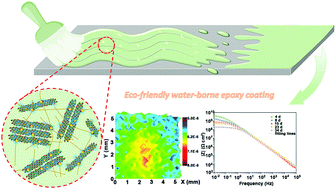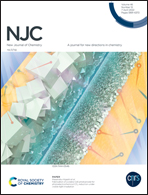Eco-friendly functionalization of hexagonal boron nitride nanosheets with carbon dots towards reinforcement of the protective performance of water-borne epoxy coatings†
Abstract
As a structural analogue of graphene, hexagonal boron nitride (h-BN) is receiving increased attention in the field of anticorrosive polymer coatings due to its electrical insulation and high barrier properties. However, the hydrophobicity of h-BN nanosheets makes them easily aggregate in water, thereby limiting their application in water-borne polymer coatings for corrosion protection. In this study, carbon dots (CDs) derived from citric acid are prepared as a dispersant for improving the dispersion of h-BN nanosheets in a water-borne epoxy (WEP) coating by taking advantage of the π–π interaction between h-BN and CDs. The possible reaction between oxygen functional groups on the CD surface and unreacted epoxy resin/curing agent could increase the compatibility and crosslinking density between h-BN and the WEP matrix, which in turn effectively reinforces the barrier effect of the composite coating. EIS results show that the impedance modulus of the h-BN@CDs/WEP coating is higher than 108 Ω cm2 after 34 d of exposure in 3.5 wt% NaCl solution, nearly three orders of magnitude higher than those of pure WEP and h-BN/WEP (∼105 Ω cm2). Additionally, salt spray and LEIS results reveal the superior corrosion protection performance of the h-BN@CDs/WEP coating even under damaged status.



 Please wait while we load your content...
Please wait while we load your content...